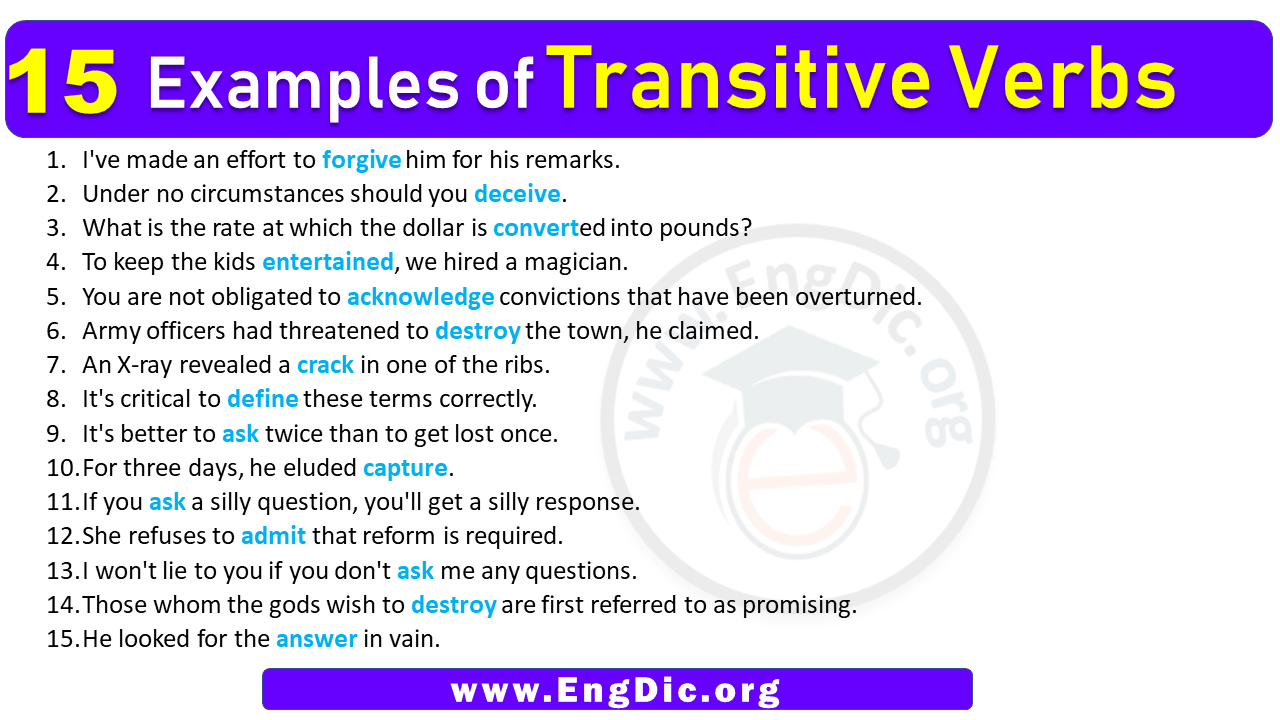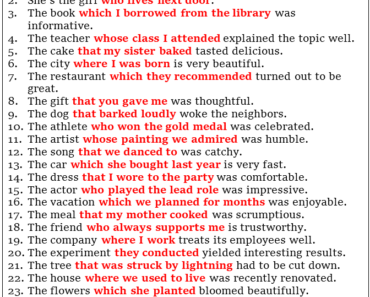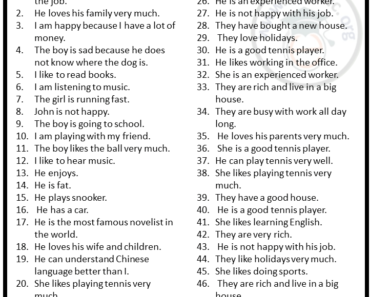Verbs are an essential part of language and grammar. Transitive verbs are particularly important for understanding how sentences work and can often be a tricky concept for English learners to grasp. In this article, we’ll explain what transitive verbs are and provide fifteen examples of transitive verbs in sentences.
Must Read: 50 Examples of Transitive Verbs

What are Transitive Verbs?
Transitive verbs are action verbs that require a direct object to complete their meaning. A direct object is a noun or pronoun that receives the action of the verb. In other words, transitive verbs are verbs that transfer the action of the verb to a receiver.
For example, in the sentence “Samantha ate an apple,” the verb “ate” is a transitive verb because it requires a direct object (“an apple”) to complete the meaning of the sentence. Without the direct object, the sentence would be incomplete: “Samantha ate” does not convey a complete idea.
Other examples of transitive verbs include “throw,” “give,” “write,” “paint,” “hit,” and “find.” These verbs all require a direct object to complete their meaning.
15 Examples of Transitive Verbs in Sentences
- She decorated the room for the party.
- The student answered the question correctly.
- He accepted the job offer yesterday.
- They enjoyed the concert last night.
- The photographer captured a stunning sunrise.
- She baked a cake for her son’s birthday.
- He fixed the leaky faucet over the weekend.
- The teacher assigned homework to the students.
- She missed her train this morning.
- The dog chased the ball in the park.
- He sold his old car and bought a new one.
- She ordered a pizza for dinner.
- The artist sketched a quick portrait.
- He borrowed a book from the library.
- They discussed the project details thoroughly.

![20 Examples of Absolute Phrases [Nominative Absolute Examples] 20 Examples of Absolute Phrases [Nominative Absolute Examples]](https://engdic.org/wp-content/uploads/2022/02/20-examples-of-absolute-phrases-370x297.png)




